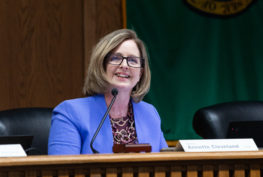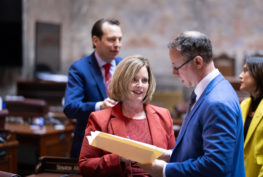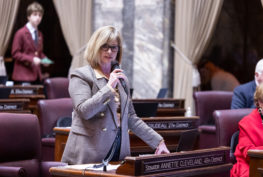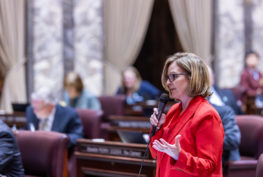The two-year transportation budget passed today by the Legislature provides $35 million toward a new I-5 bridge.
“Today everyone who has been waiting and working for the replacement of our outdated bridge has 35 million reasons to celebrate,” Sen. Annette Cleveland (D-Vancouver) said. “We have made steady progress, step by step, over the past months and years toward this important goal, but this is the big step all those little steps made possible. This is a $35 million step.”
Cleveland said the investments reaffirm Washington state’s ongoing commitment to its partners in Oregon and at the federal level, and would not have been possible without the continued efforts of a bipartisan coalition of Southwest Washington legislators. Besides Cleveland, the coalition includes Sens. Ann Rivers (R-La Center) and Lynda Wilson (R- Vancouver) and Reps. Sharon Wylie (D-Vancouver), Monica Stonier (D-Vancouver), Paul Harris (R-Vancouver), Brandon Vick (R-Vancouver) and Larry Hoff (R-Vancouver).
“From the day I took office in 2013, the replacement of the I-5 Bridge has been my biggest single priority,” she said. “It hasn’t been easy and we’ve faced many obstacles, but I never let up because I know how important a new bridge is to our communities and to our region.”
The $35 million consists of $17.5 million to open and operate an I-5 bridge project office, plus a second $17.5 million to fund the pre-design and planning of a new bridge. Earlier in the legislative session, Cleveland and a coalition of SW Washington colleagues had secured $8.5 million for the bridge office. In the final days of session, that amount increased to $17.5 million through continued negotiations.
On top of that, Cleveland was able to secure an additional $17.5 million to ensure that public outreach and bridge planning and pre-design work can begin concurrent with the efforts of the I-5 Bridge Replacement Legislative Action Committee in the months ahead.
“We are at a crucial point in our work to replace the I-5 bridge where concrete steps toward funding were necessary to continue forward in the most expeditious manner possible,” Cleveland said. “It’s time to put our money where our mouth is and demonstrate how this process differs from past practices as we proceed with an approach that makes the best use of this financial commitment.
“We all spend far too many hours waiting in bridge traffic that worsens every year. While the old bridge first built in 1917 has well served several generations, it’s time for a replacement bridge that meets our needs in this century.”




